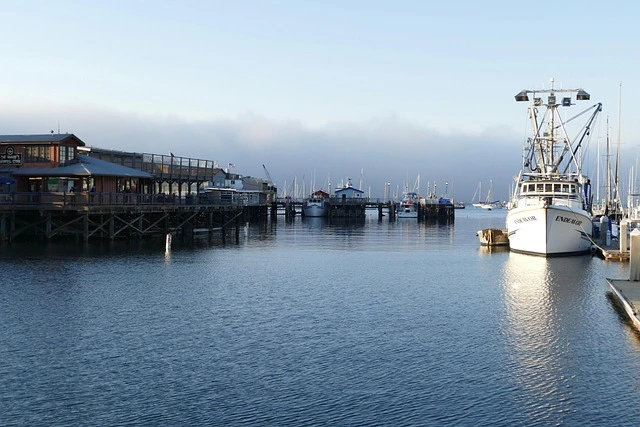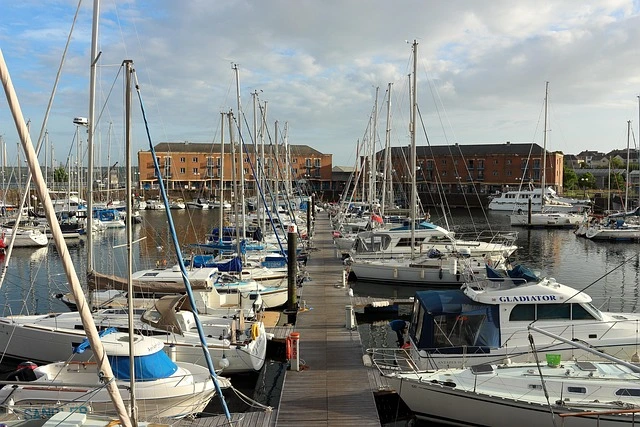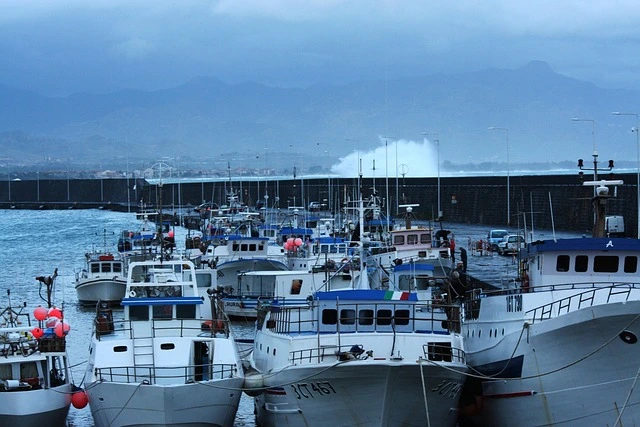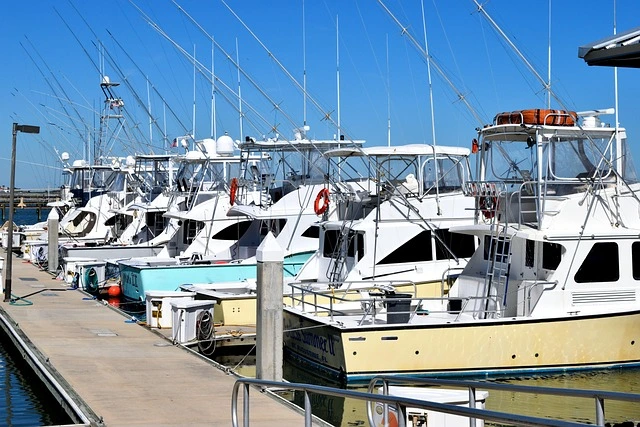Common Marina Operational Bottlenecks (and How Software Fixes Them)
Running a marina today means serving two types of audiences: experienced boaters and a growing wave of digital-native customers. For example, 42% of the growth segments are more likely than current boat owners to be heavy social media users.
While traditional boat owners may tolerate work order delays or paper-based marina issues, growth segments expect instant updates, mobile-first interactions, and fast service. Marinas must adapt to a digital-first audience or risk falling behind.
This blog breaks down the most common marine and marina operational bottlenecks bottlenecks and shows how marina management software like DockMaster helps solve them with automation, real-time data, and centralized control.

Top Marina Operational Bottlenecks
A tightly run back office results in smooth marina operations. However, that process can suffer due to outdated systems, manual processes, or isolated team members. Here are six critical marine and marina operational bottlenecks that can disrupt marina workflows and prevent growth.
1. Inefficient Work Order Management
Work orders drive everything from technician schedules to customer billings—poor management results in missed deadlines, incomplete jobs, billing disputes, and unhappy boat owners.
Work order delays can happen because technicians receive job details verbally, on printed slips, or not at all. Or there might be no shared system to track progress, update job status, or record active time. The lack of visibility and structure can force marina staff to spend time chasing tasks instead of completing them.
2. Lack of Real-Time Visibility
Marine and marina managers need live updates on dock availability, vessel movement, job status, and staff workloads. They need to know about occupied slips, scheduled boats for haul-out or fueling, and technician availability for new work orders.
The lack of real-time data during busy periods turns manageable workflows into chaos. Small delays compound long wait times, job conflicts, and missed revenue opportunities.
For example, boatyard scheduling problems can occur if boats arrive without assigned slips because reservations don’t reflect in the system. Technicians can also complain about overlapping jobs because workload data isn’t centralized.
3. Inventory Chaos
Inventory mismanagement can cause operational inefficiencies in marinas.
For example, workers must stop the job, search manually, or escalate the issue if a key part goes missing. It wastes valuable labor hours and stalls progress.
Inventory chaos also undermines profitability. Marinas can’t verify a part’s role in a particular process or billing history without a system connecting inventory to work orders. That means lost revenue on every unbilled item.
Disconnected inventory systems also prevent accurate forecasting. You can’t plan for seasonal spikes, bulk discounts, or supply chain delays without knowing your usage patterns or reorder points.
4. Manual Billing & Paperwork
The process becomes error-prone and slow when billing depends on handwritten notes, printed work orders, or delayed time entries. Manual billing or paper-based marine and marina issues also limit transparency because managers don’t have real-time visibility into receivables, outstanding balances, or daily billing performance.
It makes forecasting cash flow, planning purchases, or evaluating profitability challenging. This creates serious issues like sending customers vague or incomplete invoices, spending hours fixing incorrect entries, or struggling with unpredictable monthly revenue.

5. Poor Staff Coordination
Operational inefficiencies in marinas can only disappear if every team is on the same page. But without a shared, real-time system, coordination breaks down quickly. For example, service managers can find it challenging to assign new tasks without knowing what their technicians are doing or where they are.
Technicians might also waste time waiting for instructions, tracking down parts, or clarifying job details that were never properly communicated.
However, these aren’t personal issues. They occur because of the system. Without tools specifically for marina workflows, teams use improvised workarounds like spreadsheets, whiteboards, or daily standups to stay in sync.
The result? Everyone spends more time checking on progress than actually making it.
6. No Centralized Data
Marinas generate enormous operational data, such as customer records, vessel profiles, service history, billing details, inventory usage, reservations, etc. However, without a centralized system, this data becomes almost useless when it matters most.
This fragmentation causes serious operational blind spots. Managers can’t quickly access a boat's full service history, view a customer’s payment status, or pull a list of top-performing services or recurring issues. You can’t identify revenue trends, seasonal patterns, or inefficiencies because there’s no unified data source to analyze.
It also risks compliance and reputation. When an auditor requests documentation or a customer asks for a breakdown of past services, the team experiences frustration in piecing together information from multiple sources and incomplete records.
How DockMaster Resolves These Bottlenecks
DockMaster software is purpose-built to handle the operational inefficiencies in marinas, boatyards, and boat dealerships. Here are a few features of the marina management software that eliminate disconnectedness by improving visibility, speed, accuracy, and team coordination.
1. Work Order Automation
DockMaster’s Work Order Automation feature turns an otherwise reactive process into a controlled end-to-end workflow. You can stop relying on verbal updates or printed slips because every service job begins with a structured estimate that captures all required details: labor, parts, vessel specs, and customer approvals.
Once approved, estimates are instantly converted into live work orders without manual re-entry or lost data. From there, managers assign jobs using a drag-and-drop scheduler that shows technician availability in real time. Field techs receive job details on their mobile app, log labor as they work, and document progress with photos, notes, and time stamps.
This process eliminates confusion and backtracking, thus handling work order delays.
2. Visual Marina™ Dashboard
DockMaster’s Visual Marina Management system goes beyond vague information with a live, interactive map that reflects the current status of every slip, boat, and reservation, down to the exact dimensions and occupancy state.
Staff can view, assign, and reassign slips in real time using drag-and-drop functionality instead of manually checking availability or relying on radio calls. The system accounts for vessel size, dock configuration, and even partial occupancy on linear docks like fuel piers and removes friction from daily operations.
Every reservation, haul-out, or fueling event is visible and traceable. Technicians can’t be double-booked. Slips can’t be over-assigned. And boats don’t show up without a confirmed place to dock.
3. Inventory Module
DockMaster’s Inventory Management System gives marinas full control over parts and fuel inventory, replacing fragmented tracking methods with a real-time, centralized system built specifically for marine operations.
Every part, from oil filters to engine components, is tracked from order to installation. You can create and monitor purchase orders, match received items to vendor invoices, and manage special orders linked directly to service jobs or POS sales.
The system automatically updates stock levels as parts are used or sold. It also alerts you when inventory falls below minimum thresholds, helping you reorder on time and avoid costly service delays.

4. DockMaster Payments & Billing
Your entire billing and payment process is automated, tracked, and synced in real time with DockMaster Payments.
It generates an accurate, itemized invoice based on actual labor, parts, and services logged in the system on reservation confirmation or job completion. The merchant portal ties payments to specific jobs or rentals, reducing admin burden and audit risk.
You can also set up a recurring billing algorithm to process bills for storage, slip rentals, or service plans.
In fact, send customers digital contracts or payment links, prompting them to pay via credit card or ACH. DockMaster also ensures that your payments are deposited within 24 hours, supporting stronger cash flow and predictable revenue.
It reduces the turnaround time and frees up your admin team.
5. Mobile App
DockMaster Mobile gives marina personnel a shared, real-time view of service operations. It connects directly with DockMaster Desktop and ensures every update, job detail, and attachment is synced instantly between the field and the office.
Technicians can view assigned jobs, service notes, time logs, and parts lists without relying on verbal updates or paperwork. They can manually start or stop timers, log hours, or record time for accurate billing. Using their phones, they can also add notes, upload job photos, or attach documents directly from the dock.
Features like Mobile Attachments let technicians upload photos, videos, and files that sync with DockMaster Desktop in real time, giving office staff immediate access to on-site documentation. This helps close jobs faster, bill more accurately, and eliminate delays caused by missing field updates.
6. Integrated Reporting
DockMaster’s integrated reporting module captures your operational data, like customer details, vessel records, service jobs, payments, inventory usage, and reservations in one place, in real time.
Managers can instantly access service history for any boat, check open balances on customer accounts, or analyze which services bring in the most revenue. It also offers customizable reports, letting you focus on any business area, from recurring maintenance billing to part profitability. You can make factual decisions using this data and improve your process.
Results from Real Marinas
Marine businesses choose DockMaster software because boatyards and service operations report faster turnaround times, improved customer communication, and better financial control after switching.
Saunders Yachtworks, a full-service boatyard in Gulf Shores, Alabama, replaced its outdated, trucking-based software with DockMaster to better support its growing service operations. They experienced measurable improvements within the first six months of implementation across all departments.
According to Michael Dunlavy, Vice President and General Manager:
“We didn’t have the ability to analyze different segments of our business before. DockMaster allowed us to break down service areas, identify what’s profitable, and focus attention where it matters most.”
With DockMaster software in place, the team can now:
-
Track daily operations and financials with no end-of-month surprises
-
Assign and manage jobs with full visibility across technicians and service teams
-
Generate accurate, detailed customer invoices faster than ever
-
Communicate with clients clearly, using built-in tools to share updates and approvals
-
Access complete vessel histories and customer profiles from one place
Take Control of Your Marine And Marina Operations
The reasons for the operational bottlenecks in marine and marina operations are clear: scattered work orders, poor visibility, manual billing, inventory gaps, team misalignment, and disconnected data. These bottlenecks cost you time, money, and customer trust.
DockMaster brings your operations into one connected platform. With real-time updates and mobile access, your team can stay aligned and act faster, with fewer errors and greater accountability.
This marine and marina management software lets you shift from reactive firefighting to proactive control. Jobs move forward, customers stay informed, and managers make decisions based on real-time insights.
If you're ready to stop managing around inefficiencies and start scaling smarter, contact DockMaster today. We'll show you how to turn every part of your marina into a competitive advantage.
